Blog
Foot-shaped Running Shoe gives Runners room to Stretch
 Shoe makers are now creating foot-shaped running shoes that follow the foot’s natural anatomic shape to allow room for the toes to stretch naturally. In the past, some hardcore runners have gone as far as removing their toenails to avoid the damage created from repetitively slamming their toes into the front of their narrow shoes. This action would create blackened toenails, which in recent years have become a twisted badge of honor for more intense runners. Fortunately, the creation of these foot-shaped shoes will keep toes from being ruined while also allowing for comfort and balance of the foot. Shoes include Altra Paradigm, ZEMgear Terra Tech, Merrell Bare Access, and Topo Runduro.
Shoe makers are now creating foot-shaped running shoes that follow the foot’s natural anatomic shape to allow room for the toes to stretch naturally. In the past, some hardcore runners have gone as far as removing their toenails to avoid the damage created from repetitively slamming their toes into the front of their narrow shoes. This action would create blackened toenails, which in recent years have become a twisted badge of honor for more intense runners. Fortunately, the creation of these foot-shaped shoes will keep toes from being ruined while also allowing for comfort and balance of the foot. Shoes include Altra Paradigm, ZEMgear Terra Tech, Merrell Bare Access, and Topo Runduro.
Running shoes should be selected based on their comfort and support. For more information about what to look for in choosing a running shoe, consult with podiatrists Dr. Laurence Landau and Dr. Corrine Renne of New York Foot and Ankle. Our doctors will attend to all of your foot and ankle needs and provide you with quality treatment.
Choosing the Right Running Shoes for Your Foot Type
Running is a physical activity although fun, can put a lot of stress on the joints, bones and ligaments of the body. Injury and stress on the foot can be an important factor on which kind of shoe you’re wearing. Running shoes should be worn based on your foot type. It is important to find out what fits you based on cushioning, stability and motion.
Determining your type
Speak with a shoe specialist or retail professional to see what your foot type is. They will be able to identify and measure your arch type, stride and gait.
Running Mechanics
When you are running or walking in your shoes, every step determines how your foot is landing. Pronation is the natural rolling of your ankle from outside to inside during foot strike.
Pronation is a correct form of walking or running. It helps absorb shock and store energy from your lower extremities.
For more information about Choosing the Right Running Shoe, follow the link below.
If you have any questions, please feel free to contact one of our offices located in Franklin Square and Bethpage, NY. We offer the newest diagnostic and treatment technologies for all your foot and ankle needs.
Read more about Choosing the Right Running Shoe
Women’s High Heels increase risk for Morton’s Neuroma
 High heels and other ill-fitting shoes could be a prime cause of Morton’s Neuroma. Neuroma affects the nerves located between the toes, creating a sensation similar to stabbing while walking. It is believed that neuroma stems from compression, injury or damage to the nerve. Therefore women who wear high heels or narrow-fitting shoes are at particular risk to developing the condition. The nerve repairs itself if left untreated, using fibrous tissues that create thickening and enlargement. The disorder is aggravated by irregularities that interfere with optimal foot function, such as high arches, overpronation, and hypermobility.
High heels and other ill-fitting shoes could be a prime cause of Morton’s Neuroma. Neuroma affects the nerves located between the toes, creating a sensation similar to stabbing while walking. It is believed that neuroma stems from compression, injury or damage to the nerve. Therefore women who wear high heels or narrow-fitting shoes are at particular risk to developing the condition. The nerve repairs itself if left untreated, using fibrous tissues that create thickening and enlargement. The disorder is aggravated by irregularities that interfere with optimal foot function, such as high arches, overpronation, and hypermobility.
The disorder can be avoided by wearing shoes that are wide and deep in the toe area and that do not apply pressure to the metatarsals, or bones in the balls of your feet. Metatarsal support pads can also help by removing pressure from the nerve and promoting your foot’s natural anatomical position.
Morton’s neuroma can be a difficult condition to contend with. If you are experiencing symptoms of Morton’s Neuroma, speak to podiatrists Dr. Laurence Landau and Dr. Corrine Renne of New York Foot and Ankle. Our doctors will diagnose and treat your feet accordingly.
Morton’s Neuroma
Morton's neuroma is a painful foot condition that commonly affects the areas between the third and fourth toe and the ball of the foot, although other areas of the foot are also susceptible to this condition. Morton’s neuroma is caused by an inflamed nerve in the foot that is being squeezed and aggravated by surrounding bones. Women are more likely than men to have an occurrence of this foot condition.
What Increases the Chances of having Morton’s Neuroma?
-Ill-fitting high heels or shoes that add pressure to the toe or foot area.
-Jogging, running and any sports that involve constant impact to the foot area.
-Flat feet, bunions, and any other foot deformity may put you at a higher risk for developing Morton’s neuroma.
If you suspect that you may have this condition, you should visit your podiatrist. A podiatrist will first conduct a thorough physical examination to check for palpable masses between the bones of the foot.
If you have any questions, please feel free to contact one of our offices located in Franklin Square and Bethpage, NY. We offer the newest diagnostic and treatment technologies for all your foot and ankle needs.
Star Wars Production Halted After Hans Solo Breaks Foot
Harrison Ford brought production for the new Star Wars movie to a temporary standstill a few weeks ago when he broke his foot on set. While filming, Millennium Falcon’s door fell on his lower extremity, thus sending him to the hospital and forcing the producers to delay shooting for two weeks.
Ford seems to be healing quickly since it has been recently reported that he’s traded his cast and crutches for a simple bandage on set. According to Disney, his injury won’t stop Star Wars: Episode VII from being released in December 2015 as originally planned.
Work-related foot injuries can stop any project, even one as large and expensive as the new Star Wars movie. To get help for a foot condition you incurred while on the job, see podiatrists Dr. Corrine Renne and Dr. Laurence Landau of New York Foot and Ankle. Our doctors will get you the care you need and teach you how to avoid making the injury worse upon returning to work.
Working on Your Feet
Standing on your feet for long periods of time can cause stress and pain in your feet. Your whole body may experience change in terms of posture, back pain, bunions, callouses and or plantar warts. There are ways to avoid these conditions with proper foot care, smart choices and correct posture.
Positive Changes
Negative heeled shoe – choosing this shoe places the heel slightly lower than the ball of the foot. These are great for overall foot health. Find shoes that fit you correctly.
Go barefoot – our feet were not designed to be enclosed for hours, or all day. Try allowing yourself to expose your feet to air.
Eliminate Pain
Foot Exercises – performing simple exercises, incorporating yoga and stretches is beneficial. This will allow increased blood flow to the area and muscles of the foot.
Lakers Lose Third Team Member to Achilles tendon Injury
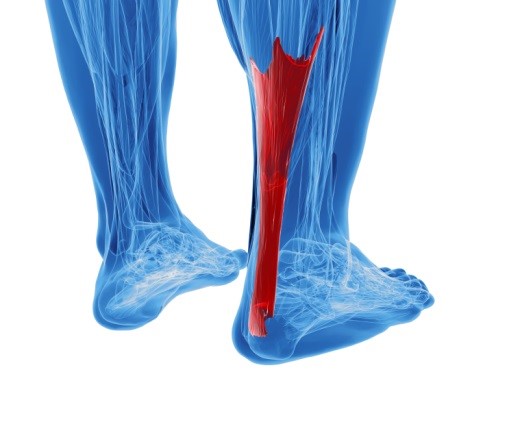 Xavier Henry of the Lakers will be out for the rest of the season due to a ruptured Achilles tendon that occurred during practice. The twenty-three year old was a huge asset to the team averaging a large amount of points after only being signed as a training-camp player. Last season it has been noted that Henry’s hard playing style aided the team, but caused plenty of wrist and knee problems that were treated with surgery during the off season. Coach Bryan Scott stated, “He just made a move, like most guys do when they mess up their Achilles. Nobody hit him or anything like that. He went down and pretty much said to us that he heard a pop.” Henry could still be traded despite the injury that is keeping him out for the rest of the season.
Xavier Henry of the Lakers will be out for the rest of the season due to a ruptured Achilles tendon that occurred during practice. The twenty-three year old was a huge asset to the team averaging a large amount of points after only being signed as a training-camp player. Last season it has been noted that Henry’s hard playing style aided the team, but caused plenty of wrist and knee problems that were treated with surgery during the off season. Coach Bryan Scott stated, “He just made a move, like most guys do when they mess up their Achilles. Nobody hit him or anything like that. He went down and pretty much said to us that he heard a pop.” Henry could still be traded despite the injury that is keeping him out for the rest of the season.
Achilles tendon injuries can be very painful. If you believe you are having problems with this condition, consult with one of our podiatrists of New York Foot and Ankle. Our doctors can treat your foot and ankle needs.
What is the Achilles Tendon?
The Achilles tendon is a tendon that connects the lower leg muscles and calf to the heel of the foot. It is the strongest tendon in the human body, and is essential for making movement possible. Because this tendon is such an integral part of the body, any injuries to it can cause severe difficulties and should immediately be presented to a doctor.
What are the symptoms of an Achilles Tendon Injury?
There are various types of injuries that can affect the Achilles tendon. The two most common are Achilles tendinitis and ruptures of the tendon.
Achilles Tendinitis Symptoms
- Inflammation
- Dull to Severe Pain
- Increased blood flow to the tendon
- Thickening of the tendon
Rupture Symptoms
- Extreme pain and swelling in the foot
- Total immobility
Treatment and Prevention
Achilles tendon injuries are diagnosed by a thorough physical evaluation. Often the doctor will order an MRI to confirm the diagnosis. Treatment will involve rest, physical therapy, and in some cases, surgery. However, various preventative measures can be taken to avoid these injuries.
For more information about Achilles Tendon Injuries, follow the link below.
If you have any questions, please contact one of our offices located in Franklin Square and Bethpage, NY. We offer the newest diagnostic and treatment technologies for all your foot care needs.
Read more about Achilles Tendon Injuries
John Simm’s Leg Injury Stops Production on TV Show
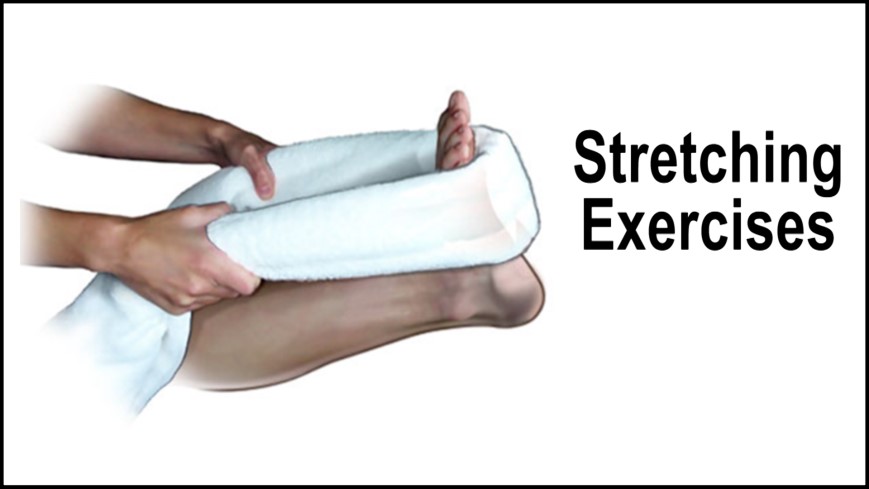 The production on John Simm’s new TV thriller PREY was put on hold after the actor sustained a leg injury during a strenuous scene. According to the Star, the demanding shot involved Simm’s character pulling himself out of a river.
The production on John Simm’s new TV thriller PREY was put on hold after the actor sustained a leg injury during a strenuous scene. According to the Star, the demanding shot involved Simm’s character pulling himself out of a river.
"We were on about the third take of me clambering up this wet verge,” the actor said. “As I launched myself forward my foot slipped and I felt my calf muscle tear." The show’s producers called for shooting to stop so that he could have the injury treated. Simms stated that he never experienced problems before, and he did proper stretching exercises and prepared correctly.
Stretching the feet properly is often key to avoiding injuries. For help learning how to do appropriate stretches, consult with Dr. Corrine Renne of New York Foot and Ankle. Dr. Renne can show you a wide range of techniques you can do to keep your feet flexible and strong.
Stretching Your Feet
Being the backbone of the body, the feet carry your entire weight and can easily become overexerted, causing cramps and pain. As with any body part, stretching your feet can serve many benefits. From increasing flexibility to even providing some pain relief, be sure to give your feet a stretch from time to time. This is especially important for athletes or anyone performing aerobic exercises, but anyone experiencing foot pain or is on their feet constantly should also engage in this practice.
Good ways to stretch your feet are:
- Crossing one leg over the others and carefully pull your toes back. Do 10-20 repetitions and repeat the process for each foot
- Face a wall with your arms out and hands flat against the wall. Step back with one foot and keep it flat on the floor while moving the other leg forward. Lean towards the wall until you feel a stretch. Hold for 30 seconds and perform 10 repetitions for each foot
- Be sure not to overextend or push your limbs too hard or you could risk pulling or straining your muscle
Individuals who tend to their feet by regular stretching every day should be able to minimize foot pain.
If you have any questions, please feel free to contact our office located in Franklin, NY. We offer the newest diagnostic and treatment technologies for all your foot care needs.
Read more about Stretching Your Feet
Blistered Feet do not deter Natalie Imbruglia’s Hike across Switzerland
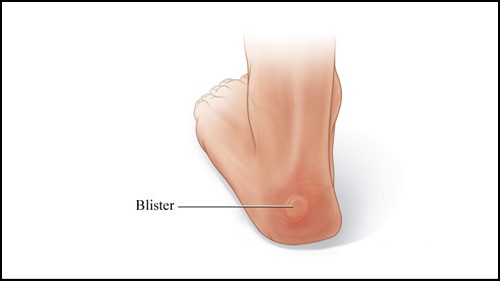 Natalie Imbruglia revealed extremely swollen and blistered feet after hiking over one hundred miles across Switzerland. As a part of the Strive challenge, the Australian actress and singer embarked on a seven-day journey across Switzerland on August 23rd. The challenge was in support of non-profit organization Virgin Money Giving, which is raising funds for projects dedicated to changing the way young people think. Imbruglia had a physiologist visit and tape up her beaten feet on the sixth day of her journey. The hike spanned from Switzerland’s south-western village of Verbier all the way to Zermatt in the Swiss Alps.
Natalie Imbruglia revealed extremely swollen and blistered feet after hiking over one hundred miles across Switzerland. As a part of the Strive challenge, the Australian actress and singer embarked on a seven-day journey across Switzerland on August 23rd. The challenge was in support of non-profit organization Virgin Money Giving, which is raising funds for projects dedicated to changing the way young people think. Imbruglia had a physiologist visit and tape up her beaten feet on the sixth day of her journey. The hike spanned from Switzerland’s south-western village of Verbier all the way to Zermatt in the Swiss Alps.
Untreated blisters can worsen and make mobility extremely difficult and painful. For quality blister treatment, see Dr. Corrine Renne of New York Foot and Ankle. Dr. Renne will attend to all of your foot and ankle needs and answer any of your related questions.
Blisters on the Feet
When tight or ill-fitting footwear is worn, many times a foot blister may develop. Blisters can even develop by constant rubbing from the shoe, often times leading to pain.
What is a Foot Blister?
A foot blister is a small pocket that is filled with fluid, forming on the upper most layer of the skin. Blisters are filled with clear fluid, and may lead to drainage of blood or pus if the area has become infected.
How do they Form?
Blisters of the feet are almost always the result of shoe rubbing and constant friction of the skin and material. Long periods of walking in shoes, sandals, or boots which don’t fit properly can result in a blister. Those who often have moisture or humidity in the feet, are prone to blister formation easily.
Prevention & Treatment
Proper care is vital to alleviate pain and prevent infection to the affected area of the foot. The best treatment is to leave them alone. New skin will develop under the blister and during the healing stages, your blister will pop.
For more information about Blisters on the Feet, follow the link below.
If you have any questions please feel free to contact our office located in Franklin, NY. We offer the newest diagnostic and treatment technologies for all your foot and ankle needs.
Read more about Blisters on the Feet
University of Calgary to Develop New Study
 Runners have often chosen footwear that is specifically tailored to their unique biomechanics with the wisdom of sports medicine specialists. However, some modern scientists dispute this notion; believing comfort is the most important attribute of a running shoe. Proponents of the comfort theory maintain that other details, including biomechanics, are rather minor.
Runners have often chosen footwear that is specifically tailored to their unique biomechanics with the wisdom of sports medicine specialists. However, some modern scientists dispute this notion; believing comfort is the most important attribute of a running shoe. Proponents of the comfort theory maintain that other details, including biomechanics, are rather minor.
To try and settle this debate, scientists at the University of Calgary is working on a new study. This study will focus on the effects of comfort in running shoes and the rate at which runners develop injuries. The ultimate goal of this study is to provide shoe developers with tips for future shoe designs.
For optimal foot health, you should understand the differences between walking and running shoes. If you have any foot or ankle injuries, see podiatrist one of our doctors at New York Foot and Ankle. Our specialists can treat your foot and ankle needs.
Foot Health: The Differences between Walking & Running Shoes
There are great ways to stay in shape: running and walking are two great exercises to a healthy lifestyle. It is important to know that running shoes and walking shoes are not interchangeable. There is a key difference on how the feet hit the ground when someone is running or walking. This is why one should be aware that a shoe is designed differently for each activity.
You may be asking yourself what the real differences are between walking and running shoes and the answers may shock you.
Differences
Walking doesn’t involve as much stress or impact on the feet as running does. However, this doesn’t mean that you should be any less prepared. When you’re walking, you land on your heels and have your foot roll forward. This rolling motion requires additional support to the feet.
Flexibility – walking shoes are designed to have soft, flexible soles. This allows the walker to push off easily with each step.
For more information about the Differences between Walking and Running Shoes, follow the link below.
If you have any questions feel free to contact us at one of our locations in New York. We offer the latest in diagnostic and treatment technology to meet your needs.
Read more about the Differences between Walking and Running Shoes
Getting the Right Shoe Size: How To Keep Your Feet Happy
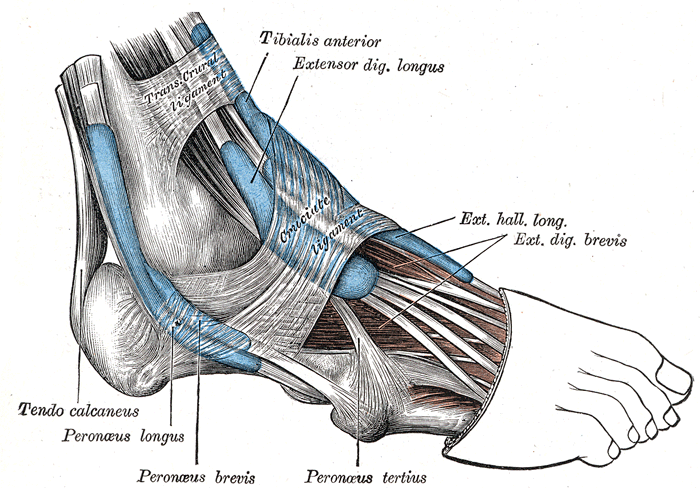 Recent research from the University of Queensland scientists has shed some light on the role other foot muscles play in arch support. The scientists used an experiment that involved weights to prove this. Upon studying the movement of the muscles in the foot, it became clear that more muscles aid in arch support than originally thought.
Recent research from the University of Queensland scientists has shed some light on the role other foot muscles play in arch support. The scientists used an experiment that involved weights to prove this. Upon studying the movement of the muscles in the foot, it became clear that more muscles aid in arch support than originally thought.
Dr. Glen Lichtwark and his colleagues at the university conducted another experiment using electrical stimulation. When activated, the tissues in the arch began to rise. Lichtwark believes that this could play an innovative role for the feet when it comes to designing footwear, injury rehabilitation and understanding bipedalism.
The biomechanics are the cogs behind the gears that manage your feet. If you would like more information, see one of our doctors at New York Foot and Ankle. Our specialists can assess and provide in-depth information as well as measure your personal foot biomechanics.
A History of Biomechanics
- Biomechanics dates back to the BC era in Egypt where evidence of professional foot care has been recorded.
- In 1974 biomechanics gained a higher profile from the studies of Merton Root, who claimed that by changing or controlling the forces between the ankle and the foot, corrections or conditions could be implemented to gain strength and coordination to the area.
Modern technology improvements are based on past theories and therapeutic processes providing a better understanding of podiatry concepts for biomechanics. Computers provide accurate determinations about the forces, moments and patterns of the foot and lower legs with the most important information captured.
Advances in materials and more awareness of biomechanics have developed enhanced corrective methods, offering further options for foot-related injuries. Understanding foot biomechanics can help improve and eliminate pain, stopping further stress to the foot.
If you have any questions feel free to contact us at one of our locations in New York. We offer the latest in diagnostic and treatment technology to meet your needs.
Read more about Biomechanics of Podiatry.
Obesity Causing Limb Amputation Epidemic in Scotland
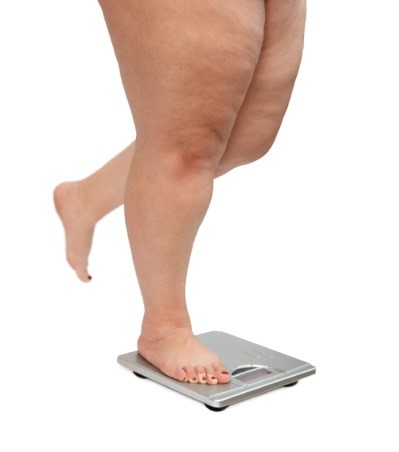 According to new data from the United Kingdom’s National Health Service, about one hundred Scottish citizens have limbs amputated every month due to health conditions they developed as a result of being obese. The most common of these conditions are peripheral vascular disorder and type 2 diabetes, which can both be caused by the same lack of exercise and a healthy diet that cause people to become overweight.
According to new data from the United Kingdom’s National Health Service, about one hundred Scottish citizens have limbs amputated every month due to health conditions they developed as a result of being obese. The most common of these conditions are peripheral vascular disorder and type 2 diabetes, which can both be caused by the same lack of exercise and a healthy diet that cause people to become overweight.
These hand and foot amputations are costing the NHS about $82 million a year, way more than the public healthcare sector is able to afford. Those who lose limbs are also entitled to cost-of-living benefits, a $46 million annual expense for the government.
While obesity can sometimes result in the drastic consequence of amputation, this condition is also known for causing many other less life-threatening foot and ankle problems. If you’re an obese individual and you’re concerned about your feet, talk to one of our doctors at New York Foot and Ankle. Our specialists can determine if your weight has caused you to develop any complications in your lower extremities and get you the care that you need.
Obesity and your Feet
Since your feet are what support your entire weight when standing, any additional weight can result in pain and swelling. Being overweight is one of the main contributors to foot complications.
Problems & Complications
Extra Weight – Even putting on just a few extra pounds could create serious complications for your feet. As your weight increases, your balance and body will shift, creating new stresses on your feet. This uneven weight distribution can cause pain, even while doing the simplest tasks, such as walking.
Diabetes – People who are overweight are at serious risk of developing type-2 diabetes, which has a drastic impact on the health of your feet. As you get older, your diabetes might worsen, which could lead to loss of feeling in your feet, sores, and bruises. You could also become more prone to various infections.
Plantar fasciitis – Pressure and stress that is placed on muscles, joints, and tendons can trigger plantar fasciitis, which is an inflammation of tissue that forms along the bottom of the foot.
For more information about Obesity and Your Feet, follow the link below.
If you have any questions feel free to contact us at one of our locations in New York. We offer the latest in diagnostic and treatment technology to meet your needs.
Read more about Obesity and Your Feet
